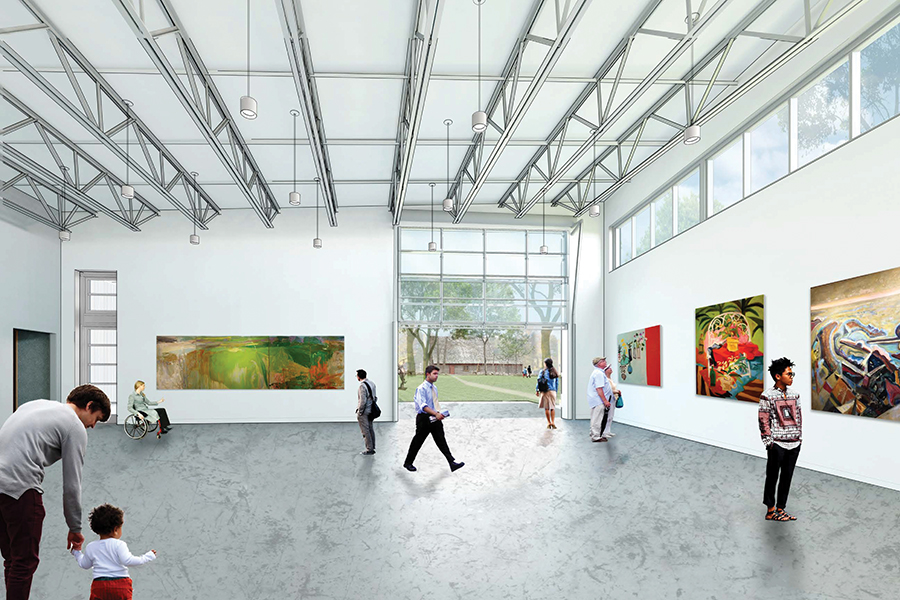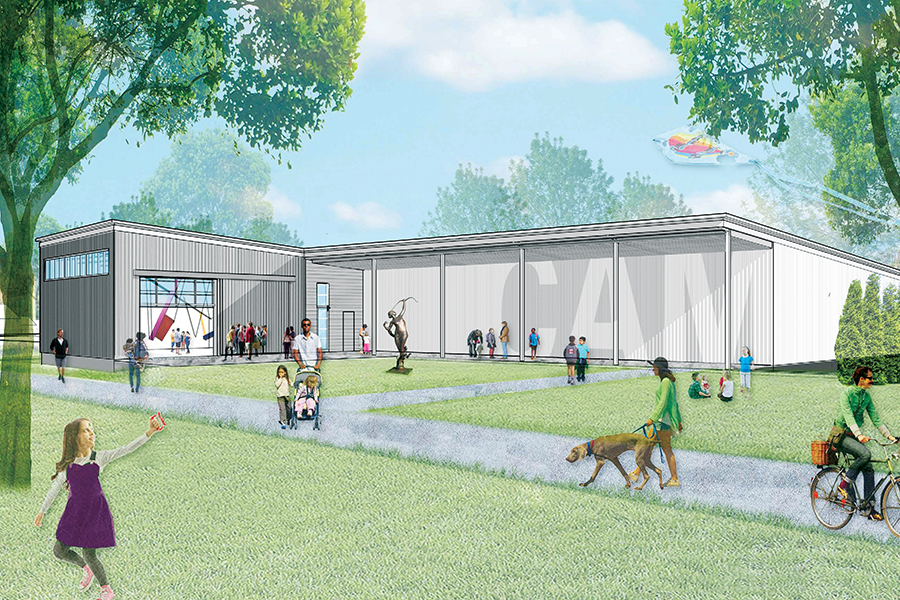On one end of the property stands the White-Ellery House, a saltbox built at the beginning of the 18th century and sided in weathered brown wood. At the other end, a very different structure has appeared in recent months: Clean and angular, clad in pale gray corrugated aluminum, it is as modern as its neighbor is historic.
Both buildings belong to the Cape Ann Museum. And if the White-Ellery House embodies the museum’s dedication to the region’s history, the new structure hints at its determination to remain a vital community institution for years ahead.
“This really is a transformative moment for the museum,” says museum director Oliver Barker.
The Cape Ann Museum was founded in 1873 as the Cape Ann Scientific and Literary Association; it moved into its current home on Pleasant Street in downtown Gloucester in the 1920s. Over the century and a half since its founding, the organization’s mission expanded along with its collections. Today, its goal is to preserve and share Cape Ann’s history and culture.
The new building, located on a plot right off Route 128 near the Annisquam River, is an extension of that mission. The development goes by the name Cape Ann Museum Green, a nod to the original Gloucester town green, which was located nearby. It will be a storage, exhibition, and event space intended to engage audiences and forge new connections with the community.
“We want this to be a place where people can gather around art and ideas,” Barker says.
A public celebration of the new campus’ opening was scheduled for June, but has been postponed to later in the year.
The entrance to the building opens on a 2,000-square-foot space with soaring ceilings and empty white walls, a canvas for future exhibitions. On the far side, a garage-style door offers a direct view of the White-Ellery House, linking the past and present.

The remaining 10,000 square feet of the building holds a state-of-the-art storage facility that will allow the institution to store its collections in a space that meets contemporary museum standards. Tight security measures will keep collections safe; precise climate control and a well-sealed building envelope will ensure the proper environment for preserving pieces is maintained. A loading dock and a series of doors will allow the acclimation of art and artifacts so they don’t experience any sudden changes in temperature or humidity.
The land between the buildings, still a work in progress, will be landscaped and transformed into a park and sculpture garden. The plot will be edged by a stone wall built from fieldstones unearthed during the construction process.
The idea for the new campus was born when, in 2016, the museum began working on a new strategic plan to take it through 2023. In the process, the planners confronted the fact that its collections were often stored in the museum basement or attic, sometimes without adequate climate control.
“We had to be honest with ourselves that we were storing collections in compromised places,” Barker says.
The decision was made that the museum would create a new facility on the land behind the White-Ellery House, which the museum had long owned but left undeveloped.
The new building will lay the groundwork for the museum to expand both its holdings and its scholarship. The facility has room for a 25 percent growth in the collections housed there. Barker also hopes the modern storage will help the museum convince supporters to donate or bequeath artwork by giving them the peace of mind that their presents will be well cared for. And the process of moving the collections to the new space will give staff the chance to carefully inspect and learn more about each piece.
To ensure the property engages the public, the exhibition and event space will feature a range of programming when the COVID-19 restrictions are lifted. For example, the museum will hold regular community workshops at which locals can create their own 8-inch-by-8-inch self-portrait. On opening day, hundreds of portraits will cover the walls of the exhibition space, creating a direct line between the people of Cape Ann and the museum that represents their home, Barker says.
“We felt that was going to be a really nice way of inviting the community to see themselves in the new space.”
For more information, visit capeannmuseum.org.

